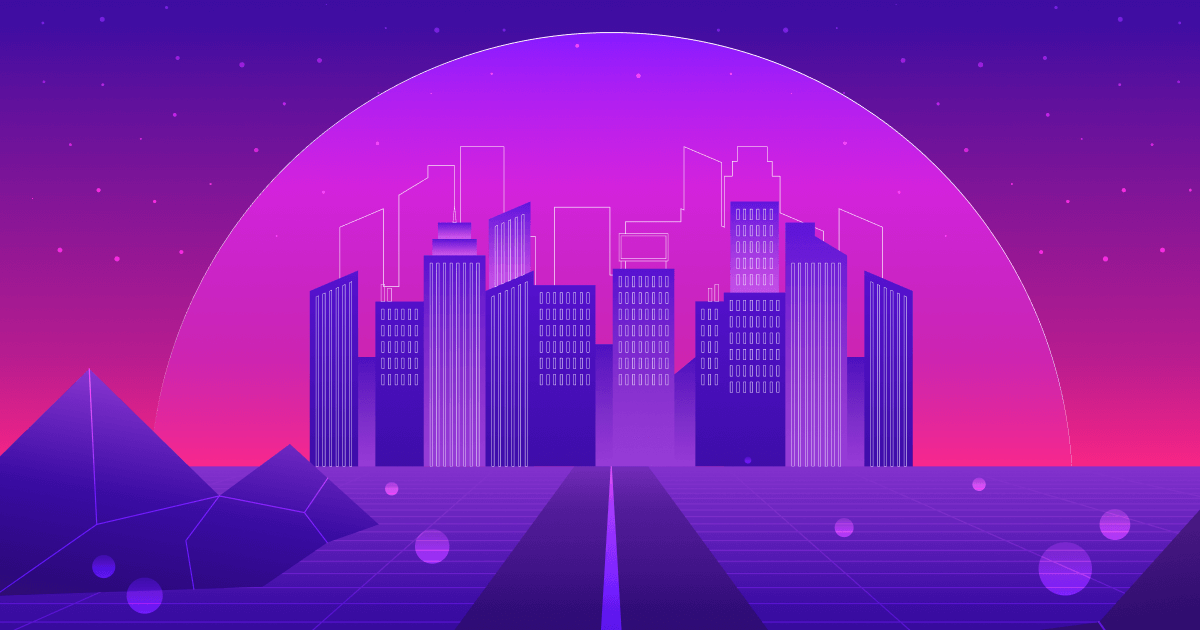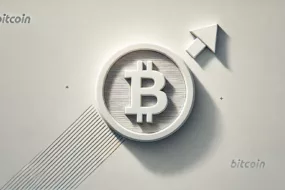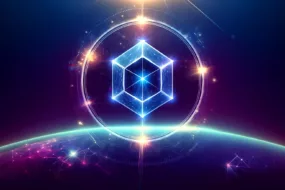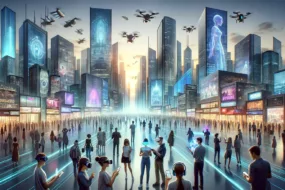
As technology continues to evolve, the concept of a metaverse is becoming increasingly popular. A metaverse is a virtual world where users can interact with each other in real-time, often using avatars or virtual representations of themselves. Within this metaverse, there exist various cities. Metaverse cities are virtual, 3D cities within a metaverse. So essentially, these are online spaces that allow users to interact with each other in real-time using avatars. These cities typically mimic real-world cities in terms of their layout, architecture, and infrastructure, but they can also be entirely fantastical and otherworldly.
In this blog, we’ll explore the top 9 metaverse cities to look out for in 2023.
What Are Metaverse Cities?
Metaverse cities are virtual cities that exist within the metaverse. Thus, in a metaverse city, users can explore and interact with virtual buildings, parks, streets, and other elements. They can also engage in various activities such as shopping, attending events, playing games, socializing with other users, and even building their own virtual properties.
The concept of metaverse cities is still in its early stages, but it has the potential to revolutionize the way we interact with virtual reality. As more people begin to explore and use the metaverse, the demand for metaverse cities will increase.
Definition of Metaverse
The metaverse is a virtual world comprising interconnected virtual environments. It is a 3D world where users can interact with each other and with virtual objects. The metaverse is similar to the internet, but it is more immersive and interactive. Users can also create avatars and explore different virtual environments within the metaverse.
Characteristics of Metaverse Cities
Here are some of the characteristics of metaverse cities:
- Virtual Infrastructure: Metaverse cities are built using virtual infrastructure, such as servers, networks, and databases. Developers use this infrastructure to create and maintain the virtual city.
- Virtual Real Estate: Just like real-world cities, metaverse cities have virtual real estate. Users can also buy and sell virtual land within the metaverse city.
- Virtual Economy: Metaverse cities have their own virtual economy. Users can buy and sell virtual goods and services within the city.
- Virtual Government: Metaverse cities have virtual governments that are responsible for maintaining law and order within the city. A group of users often runs the virtual government, and the citizens of the city elect them.
- Virtual Community: Metaverse cities have virtual communities consisting of the residents of the city. These communities are similar to real-world communities, and residents often form them around shared interests and activities.
As the metaverse continues to develop, metaverse cities will become more common. They will provide users with new opportunities for social interaction, commerce, and entertainment.
Top 9 Metaverse Cities to Look Out for in 2023
The rapid advancement of technology and the growing interest in virtual reality have given rise to the concept of metaverse cities. Here are some of the top metaverse cities to look out for in 2023:
1. Metropolis
Metropolis is a fast-growing metaverse city built on the Ethereum blockchain. It offers an immersive and interactive experience for users, supporting various forms of social interaction, including chat, voice communication, and even virtual currency transactions.
This enables users to engage in commerce, socialize, and collaborate on projects with other members of the community.
One of the unique features of the Metropolis metaverse is its focus on environmental sustainability. The platform aims to minimize its carbon footprint by using renewable energy sources and implementing eco-friendly practices in its operations.
2. Decentraland
Decentraland is a blockchain-based metaverse city that allows users to create, explore, and monetize virtual worlds. It is built on the Ethereum blockchain, which enables secure ownership and exchange of digital assets.
In Decentraland, users can buy and own virtual land using MANA, the platform’s native cryptocurrency. They can then use this land to create and customize their own virtual spaces, such as buildings, landscapes, and interactive experiences. Users can also create and monetize content, such as games, art, and social experiences.
Moreover, the user community governs Decentraland, and they can participate in the platform’s decision-making process through a decentralized autonomous organization (DAO). This enables a democratic and transparent approach to platform development and governance.
3. The Sandbox
The Sandbox is a blockchain-based virtual world that allows users to create, share, and monetize their gaming experiences using the platform’s proprietary game creation tool, the VoxEdit.
The platform also supports various forms of social interaction, including chat, voice communication, and virtual currency transactions. Hence, it enables users to engage in commerce, socialize, and collaborate on projects with other members of the community.
The Sandbox uses its native cryptocurrency, SAND, for transactions within the Metaverse.
4. Somnium Space
Somnium Space is a virtual world platform and metaverse that allows users to create, explore, and monetize content and applications in a decentralized, open-source environment. It uses the platform’s native cryptocurrency, Cubes (CUBES), for transactions.
In Somnium Space, users can buy and own virtual land, which they can then use to create and customize their own virtual spaces, such as buildings, landscapes, and interactive experiences. Users can also create and monetize content, such as games, art, and social experiences.
Somnium Space also features VR integration, which enables users to fully immerse themselves in the virtual world using a VR headset. Thus, it adds an extra level of realism and engagement to the platform.
5. CryptoVoxels
CryptoVoxels focuses on simplicity and ease of use, with a minimalist aesthetic that emphasizes the creation and curation of art and design. It also features built-in support for VR integration, which enables users to fully immerse themselves in the virtual world using a VR headset.
The platform is governed by its community of users, who can participate in the platform’s decision-making process through a decentralized autonomous organization (DAO). This enables a democratic and transparent approach to platform development and governance.
Overall, CryptoVoxels offers a unique and engaging virtual world experience that emphasizes creativity, simplicity, and community.
6. Upland
Upland is a blockchain-based metaverse city that allows users to buy, sell, and trade virtual properties. It is a blockchain-based game built on the EOSIO blockchain and uses the platform’s native cryptocurrency, UPX, for transactions.
In Upland, users can buy virtual properties based on real-world addresses, such as streets, neighborhoods, and cities. Once they own a property, they can customize and develop it by adding structures, businesses, and other features. They can also sell or trade properties with other players, creating a dynamic virtual real estate market.
Upland is designed to be accessible, with a mobile-first approach that enables players to interact with the platform on the go. It also features various gamification elements, such as missions and challenges, which provide incentives for players to explore and engage with the virtual world.
7. NeosVR
NeosVR is a virtual world platform and metaverse that allows users to create, share, and experience content and applications in a highly customizable and immersive environment. It is built on the Unity game engine and uses a combination of blockchain and cloud-based technology to enable ownership and monetization of digital assets.
In NeosVR, users can create and customize their own virtual spaces, including buildings, landscapes, and interactive experiences, using a powerful set of tools and features. Users can also create and import 3D models, audio, and other assets to enhance their creations.
NeosVR is designed to be highly customizable and flexible, with a focus on user creativity and innovation. It also features built-in support for VR integration, which enables users to fully immerse themselves in the virtual world using a VR headset.
8. High Fidelity
High Fidelity is a virtual world platform and metaverse that allows users to create and experience highly realistic and immersive virtual environments. It was developed by Philip Rosedale, the founder of Second Life, and is built on a custom high-performance engine.
In High Fidelity, users can create and customize their own virtual spaces, including buildings, landscapes, and interactive experiences, using a powerful set of tools and features. Users can also create and import 3D models, audio, and other assets to enhance their creations.
High Fidelity is designed to be highly realistic and immersive, with a focus on physics and spatial audio. It also features built-in support for VR integration, which enables users to fully immerse themselves in the virtual world using a VR headset.
9. VRChat
VRChat is a social virtual reality platform and metaverse that allows users to create, share, and experience user-generated content and applications in a highly customizable and immersive environment. It was developed by Graham Gaylor and Jesse Joudrey and is built on the Unity game engine.
In VRChat, users can create and customize their own avatars, virtual spaces, and interactive experiences using a powerful set of tools and features. Users can also create and import 3D models, audio, and other assets to enhance their creations.
VRChat is designed to be highly customizable and flexible, with a focus on user creativity and innovation. It also features built-in support for VR integration, which enables users to fully immerse themselves in the virtual world using a VR headset.
Features and Attractions of Each Metaverse City
Let’s briefly go over the unique features of each of the metaverse cities we discussed above.
Metropolis
- Focus on art and culture
- In-game cryptocurrency, MET coin
- Partnerships with major brands like Nike and Red Bull
Decentraland
- Complete decentralization with no central authority
- Ability to own virtual land and create content
- Marketplace for buying, selling, and trading virtual assets
The Sandbox
- User-generated content with voxel-based world building
- Partnerships with major companies like Atari and RollerCoaster Tycoon
- Play-to-earn model with SAND token rewards
Somnium Space
- Large, seamless open world
- Ability to build and create content using in-game tools
- Virtual reality headset support
CryptoVoxels
- Blockchain-based virtual world
- Focus on user-generated content and community building
- Unique architecture and design elements
Upland
- Based on real-world locations and properties
- Ability to buy and sell virtual real estate using real money
- Partnerships with major real estate companies like CBRE and Colliers
NeosVR
- Highly customizable and modifiable world
- Focus on collaboration and social experiences
- Advanced scripting and programming tools for content creation
High Fidelity
- High-quality audio and voice chat capabilities
- Focus on social experiences and community building
- Ability to create and trade virtual assets
VRChat
- Large user base and active community
- Wide range of user-generated content and experiences
- Cross-platform compatibility with virtual reality headsets and desktop computers
Future of Metaverse Cities
The concept of metaverse cities has been gaining momentum in recent years, and the trend is expected to continue in the future. Here are some of the trends and predictions for metaverse cities:
Trends and Predictions for Metaverse Cities
- Continued Growth: The metaverse city market is expected to grow in the coming years as more people become interested in virtual reality and the potential of metaverse cities.
- Expansion of Virtual Real Estate: As more people move into metaverse cities, the demand for virtual real estate is likely to increase. This could lead to the development of new metaverse cities and the expansion of existing ones.
- Improved Technology: Advancements in virtual reality technology are likely to make metaverse cities more immersive and engaging. This could lead to more people spending time in metaverse cities and the growth of virtual economies.
- Integration with the Real World: Metaverse cities could become more integrated with the real world, with virtual and physical experiences blending together. This could lead to new opportunities for businesses and individuals.
- Increased Investment: With the growing popularity of metaverse cities, it is likely that more investors will enter the market. This could lead to increased innovation and the development of new features and attractions in metaverse cities.
Overall, the future of metaverse cities is promising, and it will be interesting to see how they evolve and grow in the coming years.
Conclusion
In conclusion, metaverse cities are a fascinating and rapidly evolving phenomenon that offers endless possibilities for social interaction, entertainment, and economic growth. From virtual real estate to gaming experiences and immersive events, the metaverse offers something for everyone. As technology continues to advance and new developments emerge, it is clear that the metaverse is set to become an even more significant part of our lives.
FAQs
1. What is a metaverse city?
A metaverse city is a virtual place in a metaverse platform where users can interact, engage in activities, and access digital assets. It also offers a variety of services and experiences to its users, like virtual real estate, shopping, gaming, social events, education, training, etc.
2. How do you access metaverse cities?
Metaverse cities can be accessed through metaverse platforms, which typically require a compatible device, an internet connection, and a user account. Some platforms require additional software or hardware, such as VR headsets or specialized controllers.
3. What are some popular metaverse platforms?
Popular metaverse platforms include Decentraland, The Sandbox, Somnium Space, VRChat, High Fidelity, NeosVR, and Upland. These platforms offer users unique virtual experiences and social interactions within their respective metaverse cities.
4. What are some digital assets that can be found in metaverse cities?
In metaverse cities, digital assets like virtual real estate, 3D models, virtual currency, collectibles, and other virtual goods and services can be owned, traded, and utilized by users to enhance their virtual experiences.
5. How can I invest in metaverse cities?
Investing in metaverse cities can be done through the purchase and ownership of virtual real estate or digital assets, as well as investing in companies that are developing or operating metaverse platforms or related technologies. It is important to carefully research and understand the risks associated with such investments, as the market is still in its early stages and can be highly volatile.





